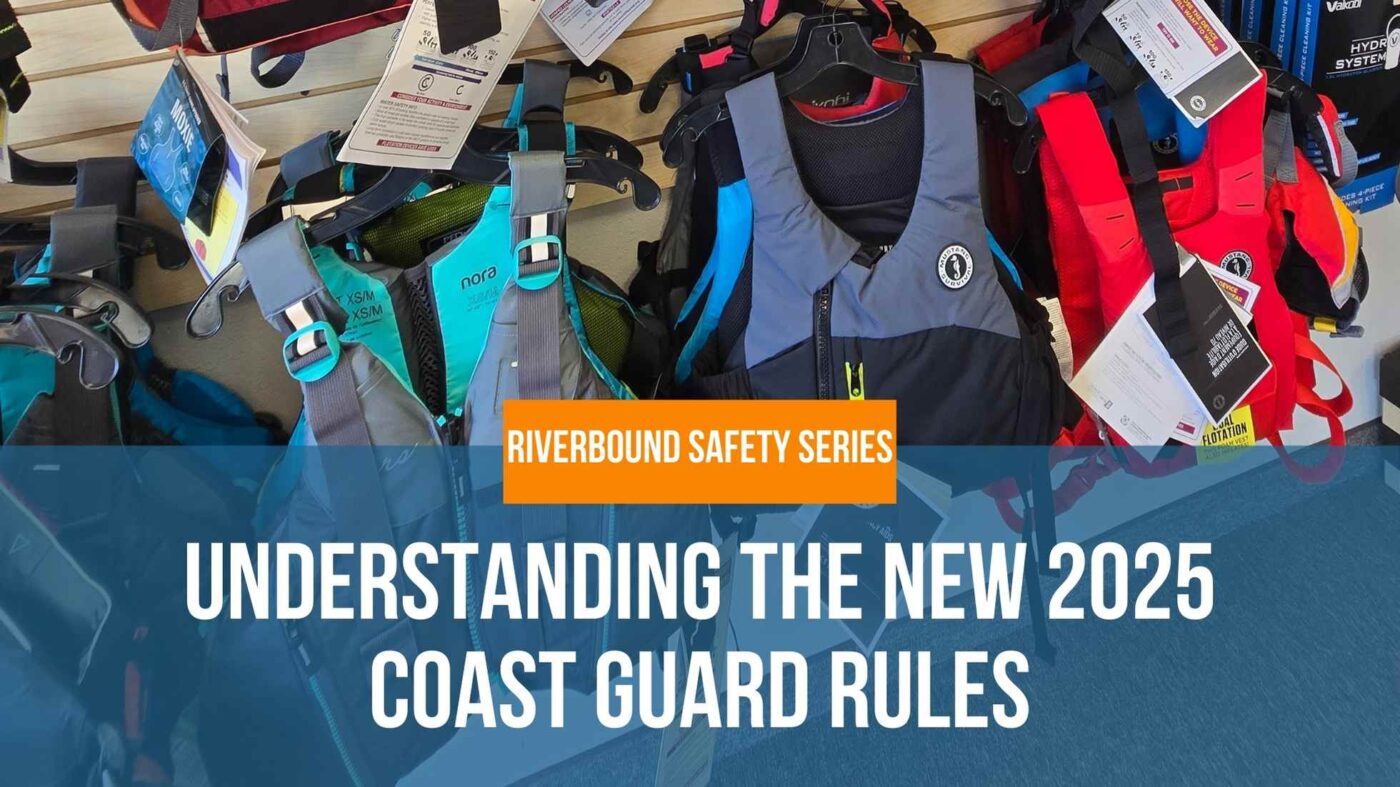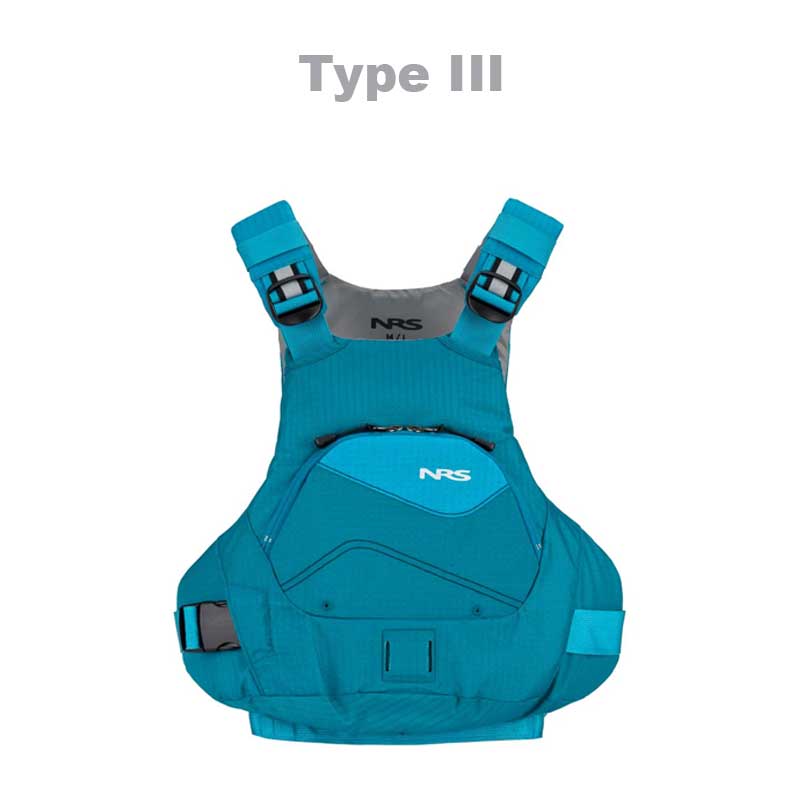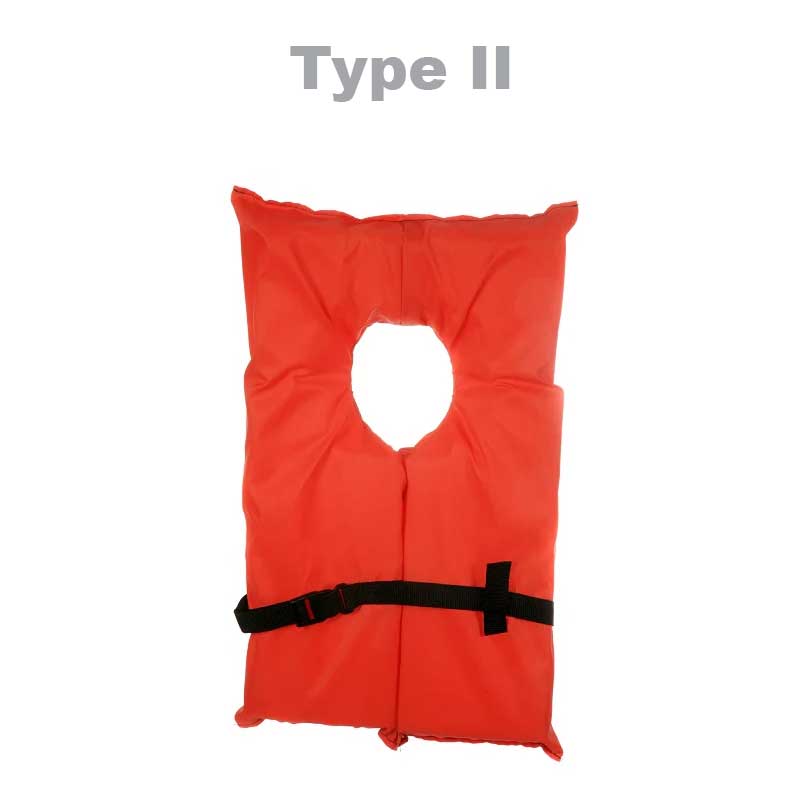
PFD vs. Life Jacket: What’s the Difference?
In U.S. regulations, the terms “PFD” (Personal Flotation Device) and “life jacket” are often used interchangeably. According to the Coast Guard, both are categorized under the same system—distinguishing them based on use, buoyancy, and in-water performance, not strictly the naming.
Traditionally, the focus was on whether a device could turn an unconscious wearer face-up (often termed “life jackets”), versus providing flotation without that self-righting function (“PFDs”).
Old System: Type II vs. Type III (and Others)
Type III – Flotation Aid
- Best for calm water activities like fishing, kayaking, or sailing, especially when rescue is likely to be prompt.
- Offers similar buoyancy to Type II but does not turn unconscious wearers face-up. Users must actively tilt their head back to stay afloat.
- Known for comfort, flexibility, and popularity in recreational use.

Type II – Near-Shore Buoyant Vest
- Designed for calm, inland waters or situations where rescue is quick.
- Provides moderate buoyancy (~15.5 lb for adults; ~11 lb for children; ~7 lb for infants).
- Can turn some unconscious wearers face-up, but with limited reliability.
- Typically more comfortable than Type I, yet still bulky.

Other Types briefly:
- Type I: High buoyancy, offshore use, reliably self-rights—bulky.
- Type IV: Throwable devices (cushions, rings), not worn.
- Type V: Special-use, activity-specific—only counts when worn according to label.
New System: Transition to Performance Levels (Effective 2025)
The Coast Guard modernized its standards to focus on performance, not just design. Starting January 6, 2025, PFDs will be labeled by Performance Levels instead of Types—these levels correspond to buoyancy in Newtons and intended use.
Enforcement starts June 4, 2025—by then, new Level labeling is mandatory for new devices.
Levels Overview:
| Level | Equivalent to | Buoyancy | Use Case |
|---|---|---|---|
| Level 50 | New category (no Type equivalent) | Minimal (e.g., 50 N) | Must be worn to count; ideal for watersports (kayaking, SUP). |
| Level 70 | Similar to Type III | ~70 N (≈15.7 lb) | Calm water recreational use—comfortable and popular. |
| Level 100 | Comparable to Type I | High buoyancy | Rough/offshore waters needing self-righting. |
| Level 150 | Superior to Type I | Extremely high buoyancy | For extreme/commercial use. |
Newtons Explained: How Buoyancy is Measured
One of the biggest changes in the new labeling system is the use of Newtons (N) to measure buoyancy.
- A Newton (N) is a unit of force. In flotation, it represents the upward force a PFD can provide in the water.
- 10 Newtons = about 2.25 pounds of buoyancy.
So, for example:
- Level 50 PFD = 50 N ≈ 11 lbs of buoyancy.
- Level 70 PFD = 70 N ≈ 15.7 lbs of buoyancy (similar to old Type III).
- Level 100 PFD = 100 N ≈ 22 lbs of buoyancy.
Why it matters: buoyancy is what keeps you afloat. A higher Newton rating means more flotation force, but often at the cost of bulk. That’s why many paddlers prefer a Level 70—it strikes a balance between comfort and safety.
Why the Change?
- Clarity: New labels use icons and wording that make it clear how the PFD works (self-righting ability, activities it’s approved for, and fit).
- Comfort: Manufacturers can design sleeker, more stylish flotation gear that people will actually wear.
- Harmonization: Matches Canadian standards, simplifying regulations across North America.
- Transition Policy: Older “Type” PFDs remain legal if in good condition—so you don’t need to toss your current gear.
Bottom Line
The Coast Guard’s shift from “Types” to “Performance Levels” is a step toward simpler, clearer, and more comfortable safety gear. If you’re used to paddling in a Type III vest, you’ll likely see it reclassified as a Level 70 in the near future. And if you’re shopping for a new PFD, you’ll soon notice more options that are lighter, better fitting, and easier to understand.
Because at the end of the day, the best life jacket—or PFD—is the one you’ll actually wear.
We carry a large selection of PFDs and Life Jackets at Riverbound Sports by Mustang Survival, NRS, Astral Designs, Vaikobi, and More.
